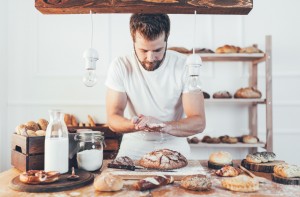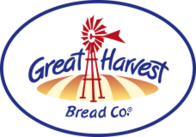Real Food. Real People.
From understanding the role of ingredients to unraveling the mysteries of leavening agents and the Maillard reaction, this post from Great Harvest in Newtonville will dive into the science of baking that creates heavenly baked goods.

Upgrade your bread game today! Experience the difference of freshly baked bread from Great Harvest Bread Co. in Newtonville. Call 617-928-1162 to place your order and savor the taste of our artisanal loaves.
The Foundation: The Role of Ingredients
Flour Power: The Protein Puzzle
Flour is the backbone of most baked goods, and understanding its protein content is essential. Different types of flour contain varying protein levels, directly affecting the final product's texture and structure. High-protein flours like bread flour create a strong gluten network, resulting in chewy bread, while low-protein flours like cake flour yield tender and delicate cakes.Sweet Chemistry: The Magic of Sugar
Sugar does more than sweeten baked goods. It contributes to flavor, enhances browning through caramelization, and retains moisture, keeping treats moist and extending shelf life. The interaction between sugar and fat also plays a role in the texture and tenderness of baked goods.The Power of Fat: Butter, Oil, and Beyond
Fat adds richness, tenderness, and flavor to baked goods. With its high water content, butter creates a delicate crumb and a buttery flavor. On the other hand, oils provide moisture and tenderness, resulting in a softer texture. The choice of fat can significantly impact the final product.The Rise: Leavening Agents and Fermentation
Bubbles in Action: Yeast and Fermentation
Yeast is responsible for the rise in bread and other yeast-based baked goods. These tiny microorganisms feed on sugars and produce carbon dioxide gas through fermentation. The gas gets trapped in the dough, causing it to expand and create a light and airy texture. The fermentation process deeply influences the flavor and structure of bread.Baking Powder and Baking Soda: The Chemical Raising Agents
Chemical raising agents like baking powder and baking soda produce carbon dioxide gas when combined with moisture and heat. Baking powder contains an acid and a base, which react when wet, creating bubbles and causing the batter to rise. Baking soda, however, requires an acidic ingredient to trigger the reaction. These leavening agents are crucial for achieving a fluffy texture in cakes, muffins, and quick bread.Great Harvest Bread Co. in Newtonville offers a delectable range of freshly baked bread made with premium ingredients. Don't miss out! Dial 617-928-1162 and bring home our artisan bread's irresistible aroma and flavor.
The Maillard Reaction: Color and Flavor Transformation
Browning Magic: The Maillard Reaction
The Maillard reaction is a complex chemical reaction that occurs when proteins and sugars react at high temperatures. This reaction creates a golden-brown color and develops rich flavors, enhancing the taste and appearance of baked goods. It is responsible for the crust on bread, the caramelization of sugar, and the nutty flavors in cookies and pastries.Controlling the Maillard Reaction
The Maillard reaction can be influenced by factors such as time and temperature. Higher temperatures result in more rapid browning, while longer baking times can deepen the flavors. Bakers use techniques like adjusting oven temperatures, adding sugars or proteins to the surface, and using coatings like egg wash or milk to control the reaction.The Power of Heat: Oven Temperature and Timing
The Goldilocks Zone: Getting the Temperature Just Right
Precise oven temperature is crucial for successful baking. Too high a temperature can cause excessive browning or even burning, while a lower temperature may result in underbaked or unevenly cooked goods. Preheating the oven and using an oven thermometer can ensure accurate and consistent temperatures for optimal baking results.Timing Is Everything: The Science of Baking Times
Baking times can vary depending on factors such as the baked goods' size, thickness, and moisture content. Understanding the characteristics of different recipes and learning to recognize visual and tactile cues can help determine the ideal baking time. Overbaking can lead to dry and tough results, while underbaking can result in a gooey or uncooked center.In Conclusion
Baking is a beautiful blend of art and science, where understanding the scientific principles behind the processes can elevate your baking skills to new heights. By grasping the role of ingredients, the magic of leavening agents, the Maillard reaction, and the importance of temperature and timing, you can confidently step into the kitchen and create extraordinary baked goods. So, armed with this newfound knowledge, embrace the science of baking and let your culinary creations rise to perfection.Discover the joy of local, freshly baked bread! Great Harvest Bread Co. in Newtonville crafts mouthwatering loaves that elevate your meals. Call 617-928-1162 today to indulge in the goodness of our made-from-scratch bread. Your taste buds will thank you!

Great Harvest Bread of Newtonville
We'd love to be in touch with you

